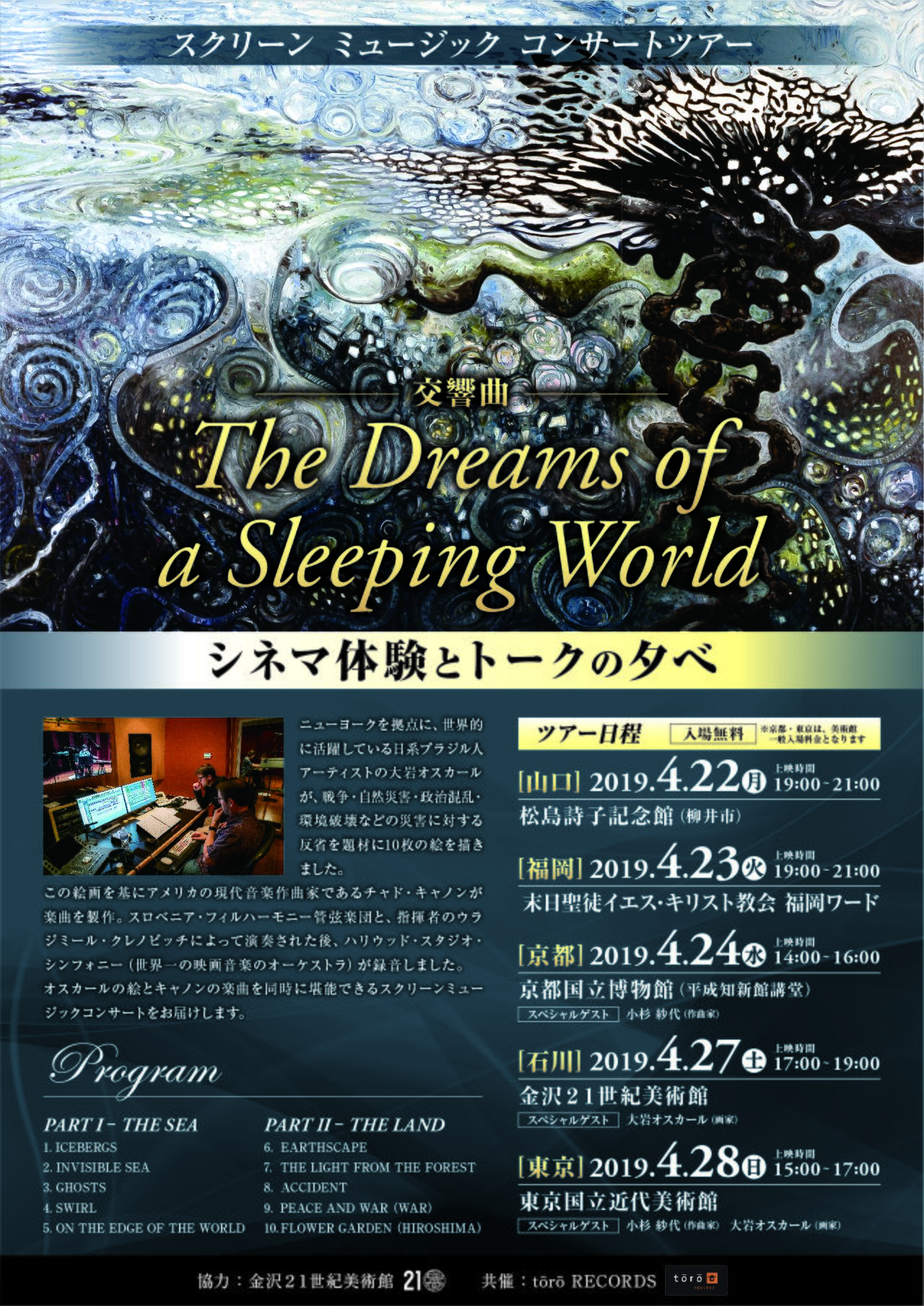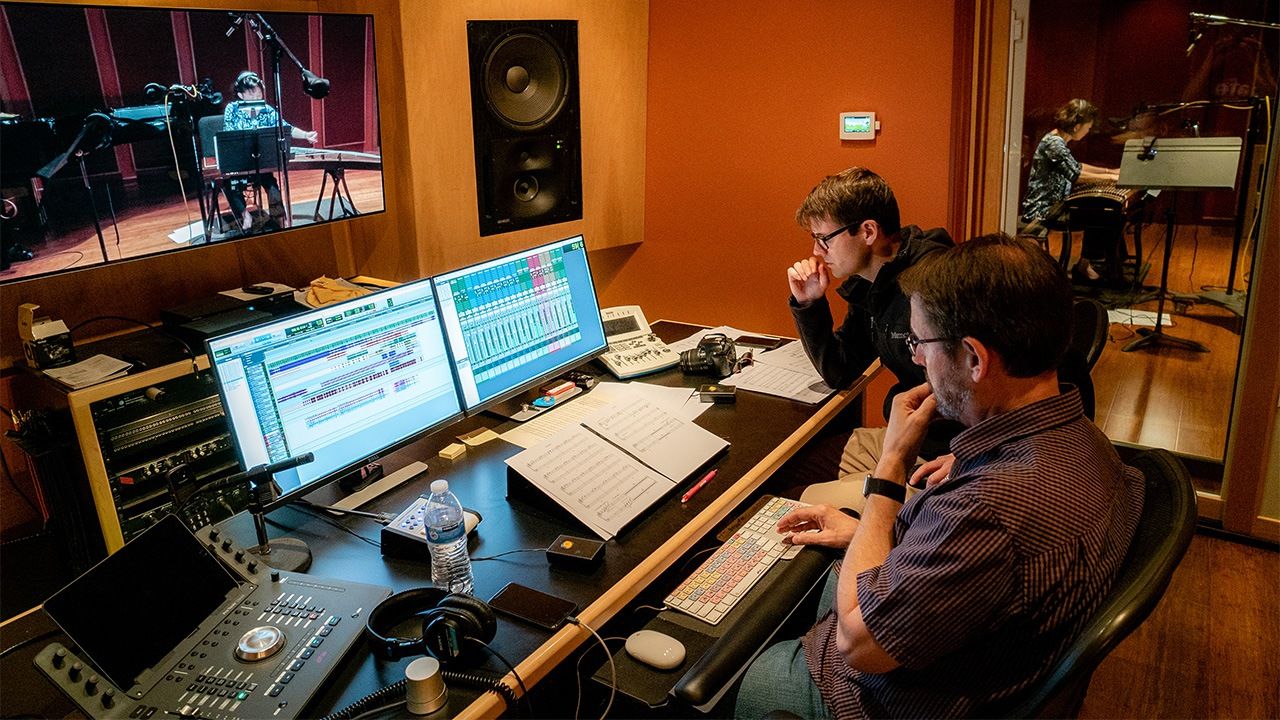
Japan-Connected Music with Global Appeal: Composer Chad Cannon
Music Culture Art- English
- 日本語
- 简体字
- 繁體字
- Français
- Español
- العربية
- Русский
For a composer in his early thirties, Chad Cannon has built up an impressive résumé. A native of Salt Lake City, Utah, Cannon, who now resides in Los Angeles, has already worked on big-budget features from The Hobbit to Godzilla to Guardians of the Galaxy Vol. 2.
Equally impressive is the connection Cannon has forged with Japan. Since first visiting the country over a decade ago, he has studied its traditional music, volunteered and performed in earthquake-torn Tōhoku, and composed the soundtrack for a documentary about atomic bomb survivor Mori Shigeaki. He’s also the lead orchestrator for Hisaishi Joe, one of Japan’s most celebrated composers.
Or in short, as Cannon puts it, “Japan just keeps calling me.”
A Most Fulfilling Mission
The first time Japan called Cannon was in 2006, when he was an aspiring composer studying music at Harvard. As with many members of the Church of Jesus Christ of Latter-Day Saints, he was assigned a country in which to serve as a missionary—and that country just happened to be Japan.
“I knew almost nothing about Asian cultures,” Cannon says, “not even the differences between Japan and China.”
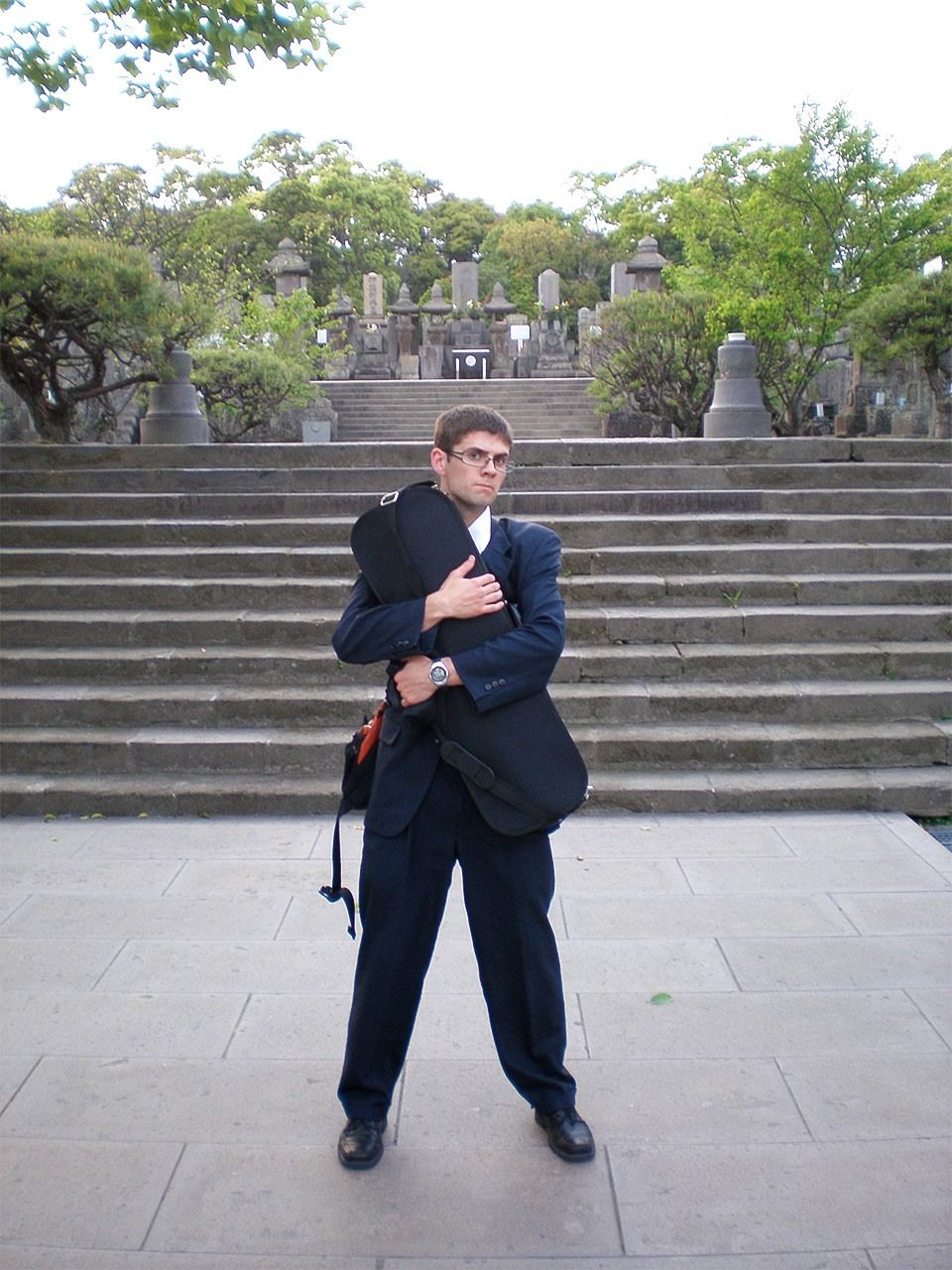
Chad Cannon holds his violin in front of Saigō Takamori’s Kagoshima grave in 2007. (Courtesy of Chad Cannon)
But soon after arriving in Kagoshima, Cannon became fascinated with the history of the country—and especially that of the Kyūshū prefecture, the birthplace of Japan’s “last samurai,” Saigō Takamori, whose grave he passed by regularly. His first encounter with traditional Japanese music came soon thereafter, when he was sent to Okinawa.
“I heard a lot of sanshin music on the tram in Naha, and I remember thinking, ‘what an interesting tonality and style of singing.’ I wanted to learn more about it.”
That music inspired Cannon to return to Okinawa during his studies at Harvard, learning how to actually play the sanshin and spending time listening to uta-sanshin masters such as Higa Yasuharu at the Okinawa Prefectural University of the Arts. And it stuck with him.
“That music was ringing in my ears even a year after I got home,” he says.
Ryū, Midori, and Joe
Back in the States after his two-year mission, Cannon made it his goal to retain his Japanese ability, enrolling in language classes at Harvard. That brought him in contact with the internationally renowned violinist Ryū Gotō, who performed Cannon’s thesis piece, a composition based on Okinawan poems.
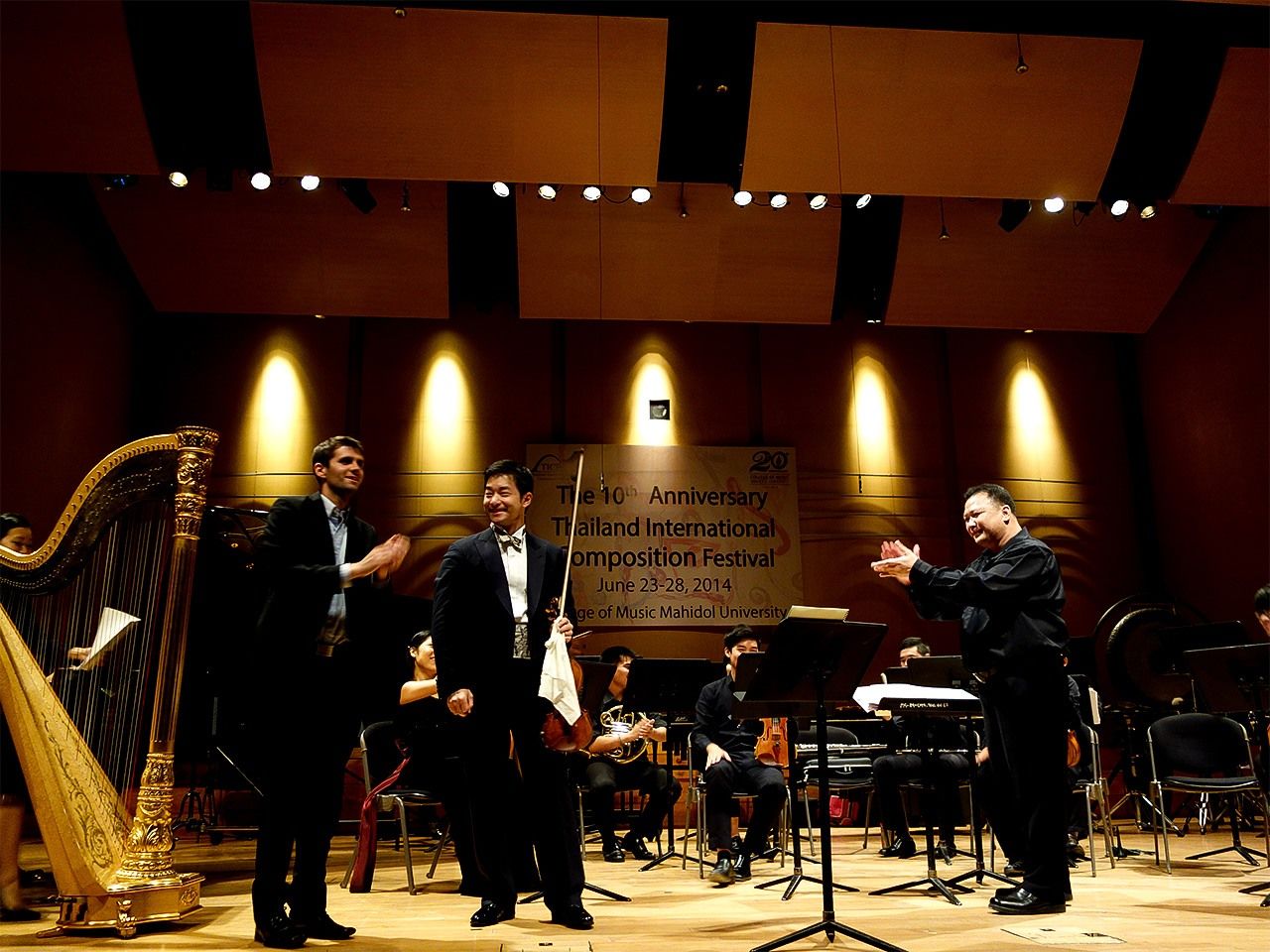
Cannon, at left, with Gotō (center) at the Thailand International Composition Festival in Bangkok in June 2014. (Courtesy of Asia/America New Music Institute)
Before too long, Cannon was introduced to Gotō’s half-sister, the famous violinist Midori Gotō. He embarked on several musical tours throughout Asia as part of Midori’s Music Sharing charity project, visiting countries like Myanmar, Bangladesh, and Nepal.
The trips were “essential to forming my artistic ideas,” says Cannon. “I had a pretty easy childhood, growing up in Utah. Going out into the world and seeing these things firsthand really changes how you understand people’s experiences.”
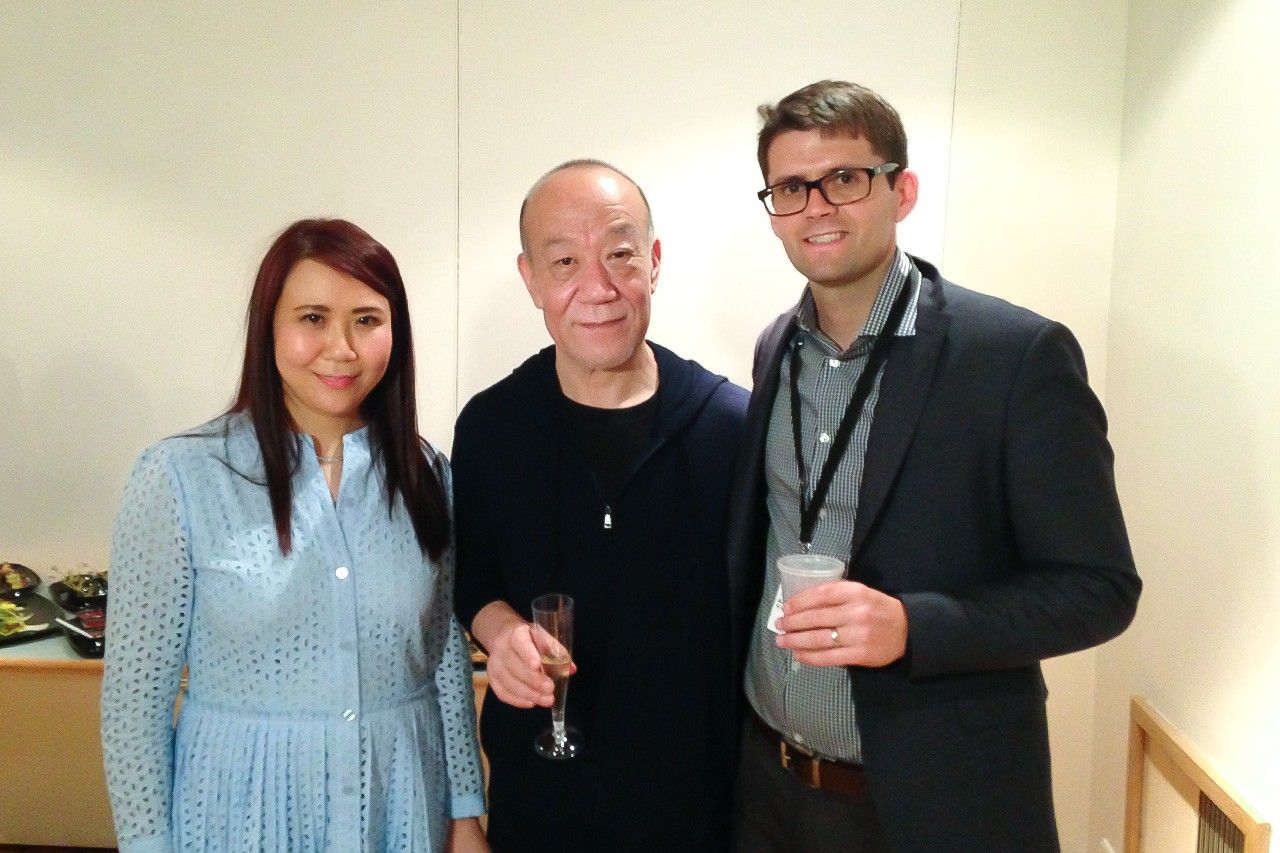
From right, Chad Cannon with Hisaishi Joe and his daughter, the singer Fujisawa Mai, in 2017 in Paris. (Courtesy of Chad Cannon)
Working with Midori changed Cannon’s life in one more big way: It led to his connection with Hisaishi Joe, the composer best known for his work with anime director Miyazaki Hayao on films like My Neighbor Totoro and Spirited Away. Cannon currently works as Hisaishi’s main arranger and orchestrator for his live concert tours plus video game and film compositions. The work involves expanding and elaborating on Hisaishi’s original melodies so they can be performed by a full orchestra.
But why did the celebrated Japanese composer select this young American?
Cannon explains: “With composers, it doesn’t make a difference whether they’re American, Japanese, Chinese—the biggest thing is artistic trust. Like, can I really trust this person to handle my musical material and do something appropriate and convincing with it?”
As it happens, Hisaishi had written a theme song for Midori’s nonprofit, which Cannon then turned around and adapted for full orchestration. Hisaishi, hearing Cannon’s version, decided the young composer could be trusted with his music.
“Hisaishi-sensei’s music has influenced my music greatly,” says Cannon. “He’s just an incredible talent. When you dive into someone’s music, you can really tell how deeply they’re thinking about things, and with him, there’s just a lot there.”
Cannon’s arrangements have now been used on several Hisaishi Joe world tours, and a new tour is planned for later this year.
Paper Lanterns
Around the same time Cannon started working with Hisaishi, he composed the music for the documentary Paper Lanterns, a film about Mori Shigeaki, a survivor of the atomic bombing of Hiroshima. Following the end of the war, Mori spent over four decades tracking down the families of 12 American prisoners of war who died in the bombing. Mori’s long quest, which ultimately ended in success and an iconic photo alongside US President Barack Obama, was traced by the film.
In creating the soundtrack for Paper Lanterns, Cannon called on the musical influences and skills he’d built up in Japan, writing for instruments like the shakuhachi, koto, and taiko drums.
“The film is half in English and half in Japanese, and the cast is half Japanese, half American, so we really wanted the music to represent that,” explains Cannon. “I think that score is the best example in my own music of how Japan has influenced me.”
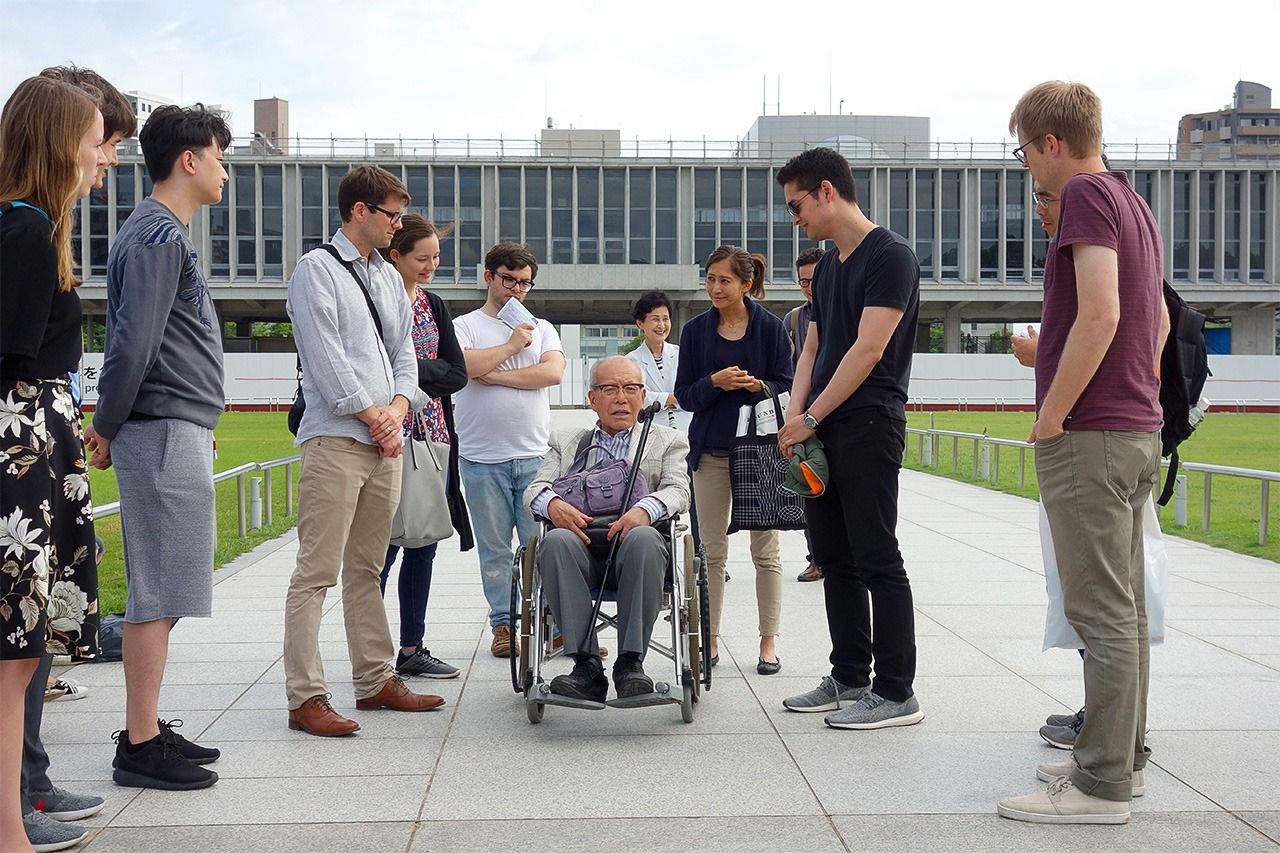
Cannon and members of the Asia/America New Music Institute met hibakusha Mori Shigeaki in Hiroshima. (courtesy of AANMI, photo by Benedikt Schulte)
The Dreams of a Sleeping World
In 2017, Cannon embarked on what may be his most ambitious project to date: an hour-long suite that accompanies 10 paintings created by the artist Oscar Ōiwa.
Unsurprisingly, that project, The Dreams of a Sleeping World, also has a Japan connection. The piece “Accident” deals with the March 11, 2011, triple disaster in Fukushima, and is paired with a poem from Fukushima-based poet Wagō Ryōichi.
In one of his poems, “Wagō says the meaning of the word Fukushima has changed. Now when people hear it, they think of radioactive waste and tragedy,” says Cannon. “So the word Fukushima becomes very important in that movement. By the end, the choir is shouting ‘Fukushima, Fukushima,’ saying it over and over again.”
Meanwhile, the piece “Flower Garden (Hiroshima)” deals with another Japanese tragedy, though Cannon infuses it with a feeling of hope.
“Oscar’s painting really focuses on the current beauty of Hiroshima, not necessarily the past. Again, when Westerners hear ‘Hiroshima,’ all they think about is the atomic bomb, but Hiroshima has incredible history and beauty. I was trying to express the fact that these places in Japan are more than just what you hear about in the news.”
The Dreams of a Sleeping World is heading to Japan this month with a series of screenings that combine Ōiwa’s paintings and Cannon’s music into a cinematic experience. Separately, from April 27 to August 25, several of the songs will be played at the exhibition Oscar Ōiwa: Journey to the Light at the Twenty-First Century Museum of Contemporary Art, Kanazawa.
The Donald Keene of Music
One of Cannon’s biggest role models is not a composer, but a scholar, writer, and translator who served as bridge between Japan and the English-speaking world for decades: Donald Keene, who died this year at the age of 96.
“In Donald’s case, it was through literature,” Cannon says, “but in my case it’s through music.”
Those are big shoes to fill, but through activities like volunteering in postdisaster Tōhoku, touring Japan with both Midori and his own group—AANMI, the Asia/America New Music Institute—and continually creating music that combines American and Japanese influences, Cannon seems to be lacing up. And with even more planned, including further musical tours and even a yearly Kyoto-based music workshop, this young composer’s connection with Japan seems set to grow even deeper.
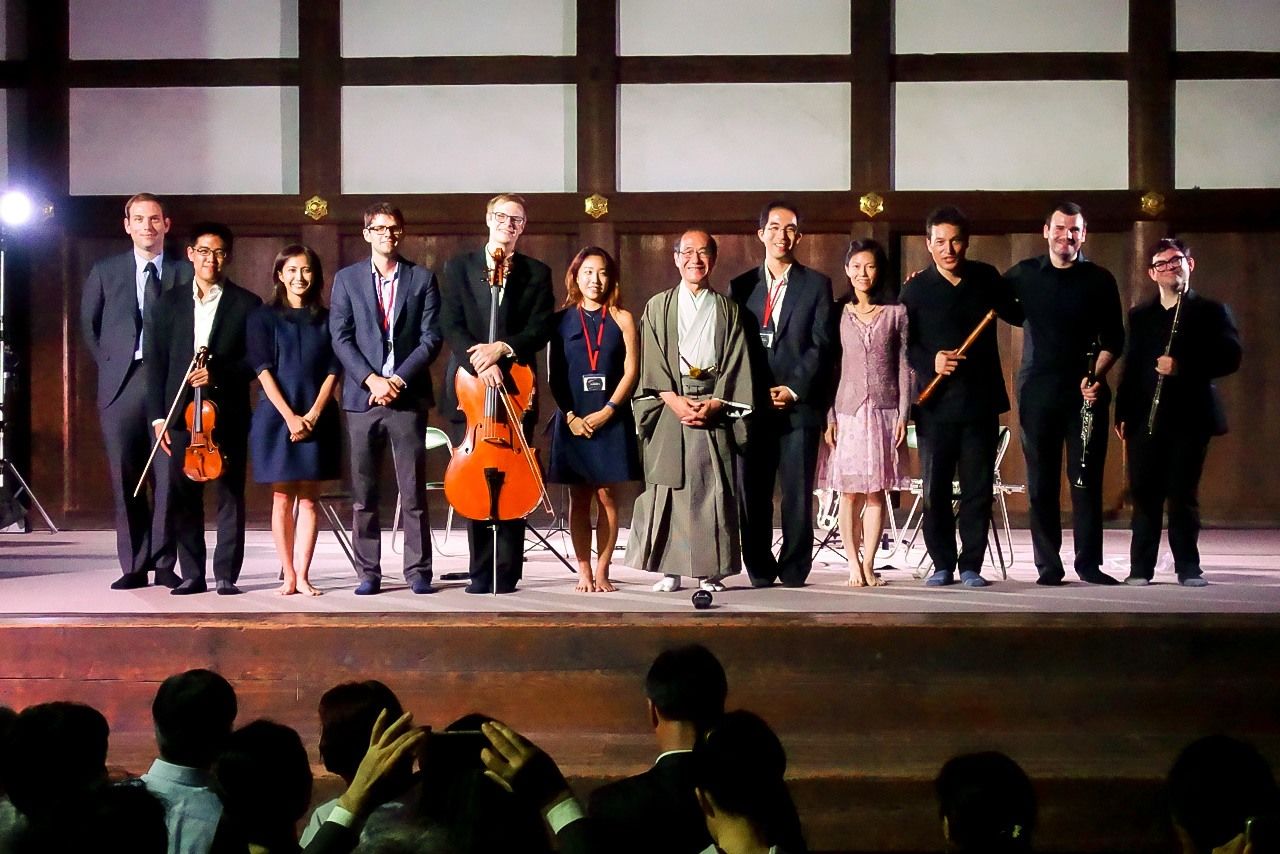
AANMI members at Nijō Castle with Kyoto Mayor Kadokawa Daisaku in June 2018. (Courtesy of AANMI, photo by Benedikt Schulte)
Schedule for 2019 Events in Japan
- April 22, 7:00–9:00 pm, Utako Matsushima Memorial Museum, Yanai, Yamaguchi
- April 23, 7:00–9:00 pm, The Church of Jesus Christ of Latter-Day Saints, Fukuoka
- April 24, 2:00–4:00 pm, Kyoto National Museum (co-presentation with Kosugi Sayo, who will screen an excerpt of her film about Kyoto’s autumn leaves)
- April 27, 5:00–7:00 pm, Kanazawa Twenty-First Century Museum of Art (with special guest Oscar Ōiwa)
- April 28, 3:00–5:00 pm, The National Museum of Modern Art, Tokyo (with special guests Oscar Ōiwa and Kosugi Sayo)
Note: Admission to the performances is free, but visitors in Kyoto and Tokyo will need to pay for museum admission.
(Originally written in English. Banner photo: Chad Cannon and Grammy-winning engineer Matthew Snyder work on a film score with guzheng soloist Cynthia Hsiang. © Braulio Lin.)
music Mori Shigeaki film Ghibli Paper Lanterns soundtrack Chad Cannon Oscar Oiwa Chad Cannon Paper Lanterns Chad Cannon Paper Lanterns
